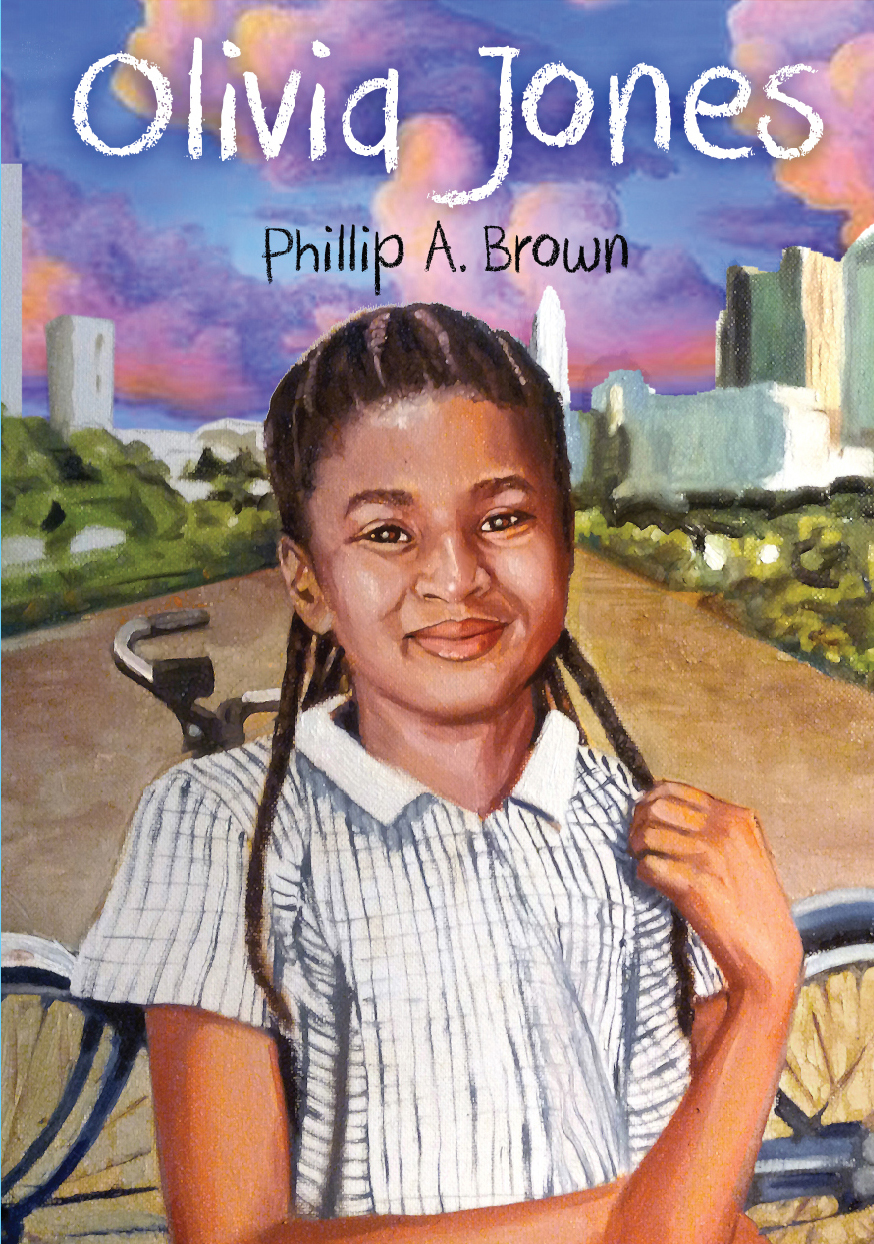
Book cover is copyrighted material used for illustrative purposes.
Book Review — Olivia Jones by Phillip A. Brown
Recently, Jan Carpenter Tucker sent me a copy of Olivia Jones by first-time author Phillip A. Brown. Jan is Sister Souurce, Inc.’s Design and Digital Solutions Specialist, and owner of Night Star Publisher, which did the editing and book design for Olivia Jones. Jan is a fabulous web designer/developer, editor and staff person with Sister Souurce, Inc. She has taken the concept of Sister Souurce, Inc., captured its mission and vision, and translated it into our user-friendly website focusing on Black UU women and girls. I was eager to see her skills in another context, and considering the book as a possible gift for my nine-year-old granddaughter, Malia – a prolific reader and writer.
In my weekly Sunday FaceTime chats with Malia, we often read stories to each other. Until recently, these stories have been “picture books” — long on pictures and short on text. But when she turned nine in January, I could no longer justify reading “picture books” to her; I had begun to think about the transition and how to identify books that were more age-appropriate. Hence, my curiosity about Olivia Jones.
The book arrived on a Saturday. I picked it up from my post office box and began to read the book immediately upon arriving home. I completed the softback book in less than a day with a couple of breaks. The book consists of 145 pages of text with additional pages devoted to the bibliography, advance reviews and the author’s and illustrators’ biographies. The cover of Olivia Jones depicts a smiling brown-skinned Olivia with cornrows.
Olivia Jones is a historical fiction set in the 1960s in Selma, Alabama during the nation’s civil rights struggles. While it is told through the innocent eyes of the eleven-year-old protagonist, it centers the larger issue of justice, and the struggles of Black southerners facing centuries-old oppressions. The reader follows Olivia (Oli) and her best friend, Bartholomew (Mo), on their journey to find their fathers.
The children’s adventures to find their fathers are chronicled and the reader sees through their eyes the twists and turns of their lives punctuated by the celebrations and concerns of being Black in Alabama. It becomes apparent that the plot is less about the missing fathers, and more about the why of their missing. Their absence is connected to the dangers, seen and unseen, that Black men and boys encounter in a racist society. The plot depicts how racism can create fractures in Black lives, families and communities. During a period when Black life was fraught with danger, as a result of white supremacy, the author balances the often fragile lives of Blacks and the ever-present veneer of racism. Brown also skillfully depicts how loyalty, compassion and resilience are important, deeply rooted, life-saving elements.
The author illustrates the injustices of racism through Olivia’s guileless eyes using age-appropriate narratives about the ugly realities of lynching and other forms of violence too common in that era. Two young boys, hidden in the woods and afraid, witness a lynching narrated using sparse words only stating the incident the boys see instead of horrible details a book geared to an older reader might.
Having once read a book to my granddaughter about Native Americans that I did not read all the way through before sharing with her, an age-appropriate narrative is important. I wanted her to be familiar with the culture and the injustices to which Native Americans had been subjected. However, the author provided graphic details of a genocidal massacre causing my voice to quiver and tears to well up in my eyes. Yet I made the decision to continue reading. My granddaughter is very curious and would have wanted to know why I was crying. I explained why I was so sad and how wrong the actions of the soldiers were. I also solicited her feelings and emotions. She was sad but she was not as triggered as I was. Thank goodness!
Still, while we desire to provide learning opportunities for our youth about the true story of America, we also want to be age-appropriate. Olivia Jones and the author, Phillip A. Brown, get my vote of approval. The book is educationally age-appropriate for ages eight and older. The author is a gifted writer. His story line flows well even though he moves back and forth in time between the adult fathers’ lives and their childhoods, and then back to present times. To make these transitions easier for the reader he provides subheadings describing every transition. Even when the text included only a paragraph these subtitles alerted the reader to the speaker and time period.
The book seems to end abruptly. Perhaps the author plans to create sequels, much like Beverly Cleary and Judy Blume did. They were two popular authors in the 1960s who recently died. However, neither of these white authors talked about social matters of the day, nor featured Black or Brown children. Our children are fortunate that there are a lot more books featuring them, their communities, their accomplishments and the issues and circumstances that impact our lives. Thank you, Phillip A. Brown, for your contribution to the treasure trove of books that are written for our Black children and youngsters!
– Reviewed by Rev. Dr. Qiyamah A. Rahman
